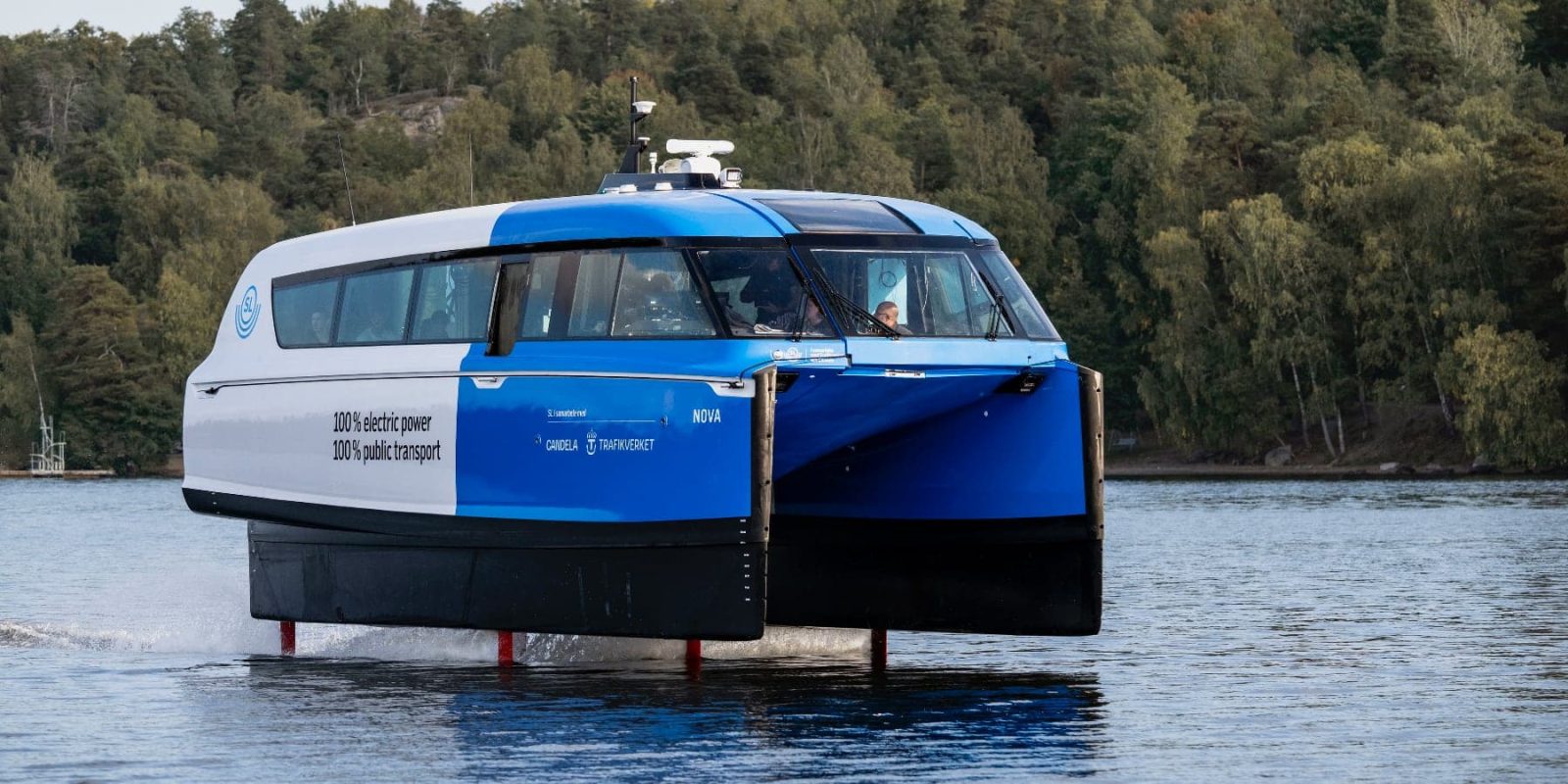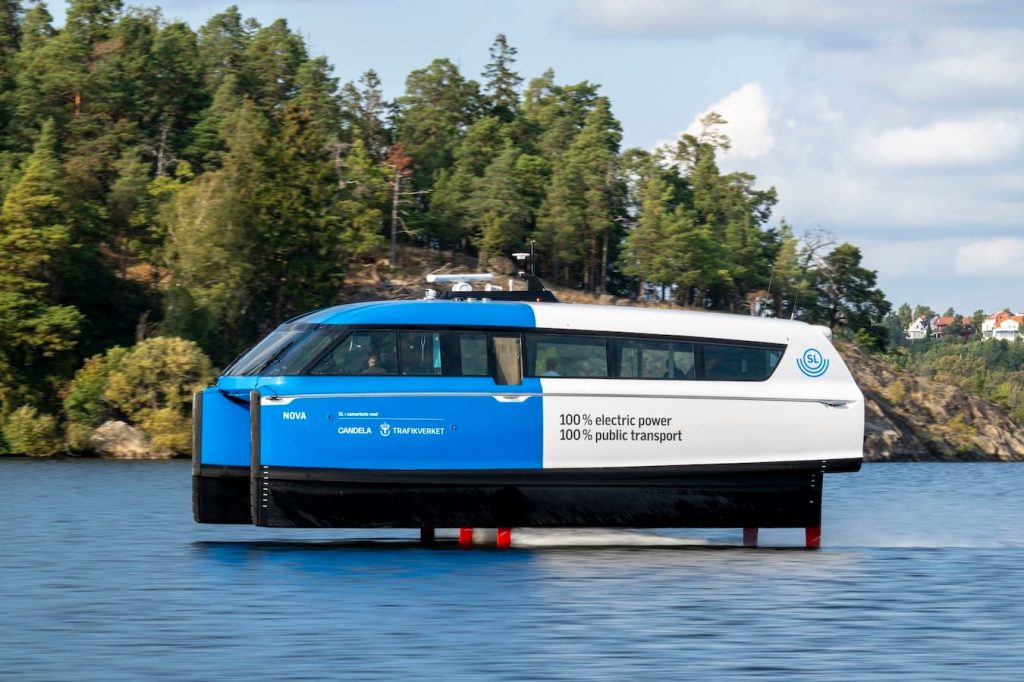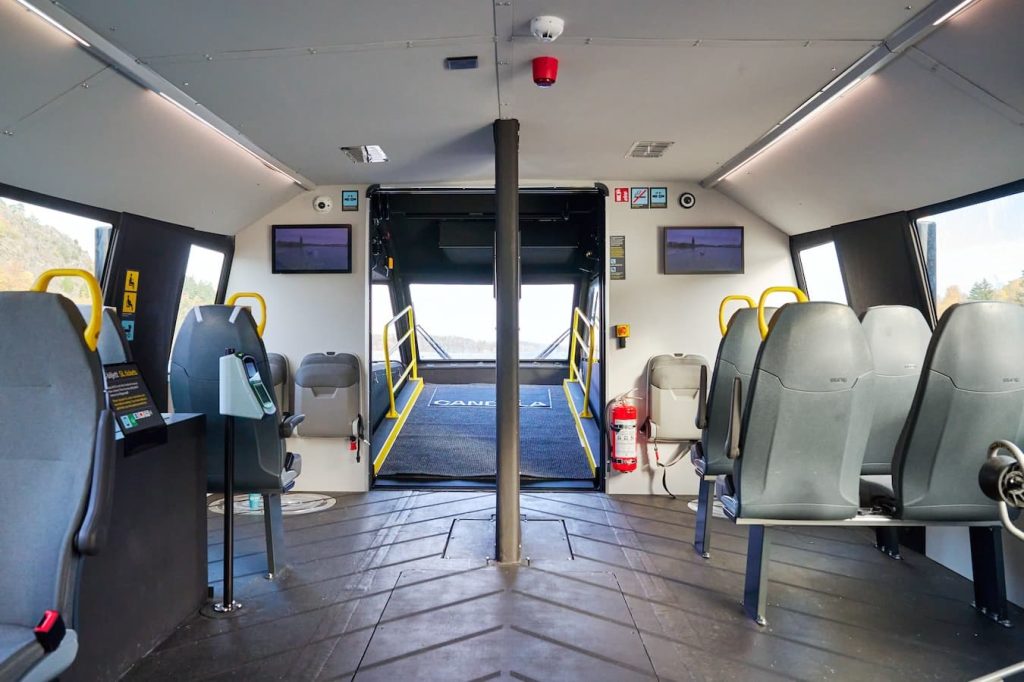
As Candela’s P-12 gracefully flew over the waterways in Stockholm this morning, the occasion marked the first-ever business operation of a hydrofoil electrical ferry.
It’s been a very long time coming for the P-12, with years of improvement ensuing within the first pictures of the boat launched over two years in the past and testing getting began solely final yr.
Now the primary Candela P-12 in business operation, named “Nova”, set out this morning from Tappström, shortly reaching its vacation spot at Stockholm Metropolis Corridor. The 15 km (9 mile) journey took simply half-hour, or round half the time it usually takes by automobile or public transit.
However it’s not solely faster by boat, it’s additionally much more comfy, no less than if commuters are on Candela’s boats. The P-12 electrical ferry glides above the water utilizing a set of computer-controlled hydrofoils, making the experience smoother and permitting the boat to maintain up velocity even in no-wake zones. Meaning it even arrives quicker than typical boats because it doesn’t must decelerate in no-wake areas.

The opposite key profit to these hydrofoils, moreover making for a brilliant easy experience and eradicating the affect of nausea in commuters who’re susceptible to sea-sickness (like this journalist who has efficiently saved his breakfast down on a number of Candela boats to date), is that the P-12 can also be extraordinarily environment friendly.
In line with the corporate, these hydrofoils end in vitality financial savings of round 80% in comparison with typical boats, permitting the Candela P-12 to make use of a a lot smaller battery and considerably decreasing the price to provide and buy. DC Quick Charging is feasible from a standard automobile charger situated on the docks and will be completed in minutes over a lunch break, which means it received’t impression the conventional timetables for the ferry.
“Typical ships haven’t developed a lot in 100 years and are among the many least energy-efficient transport modes, solely rivaled by a battle tank,” says Gustav Hasselskog, Founder and CEO of Candela.
That’s not an exaggeration. Stockholm’s roughly 70 public transport vessels use extra fossil fuels than town’s buses and trains mixed, regardless of representing solely a small share of complete ridership. Water transport is historically expensive and gradual, because the vessels create giant wakes, limiting their velocity in lots of areas. However with Candela’s P-12 electrical hydrofoil ferry, journeys at the moment are not solely faster and extra comfy, but additionally extra environment friendly and with considerably decrease prices. And that’s earlier than including in the advantages of lowered air pollution and dangerous emissions.
“For the primary time, there’s a vessel that makes waterborne transport quicker, greener, and extra reasonably priced than land transport. It’s a renaissance for the world’s waterways, and it’s thrilling that Stockholm is main the best way,” mentioned Gustav Hasselskog.


Nova runs solely on renewable vitality and is the quickest electrical ferry in operation on this planet, cruising at 25 knots, outpacing diesel-powered V-class ferries that beforehand held the velocity file.
This can be simply the primary instance of business operations for the Candela P-12 platform, but it surely’s prone to quickly be adopted by many others after orders have been positioned from Saudi Arabia, New Zealand, and Germany, amongst further purchasers that Candela says are but to be publicly introduced.
Till then, check out my very own take a look at experience on the primary ever manufacturing Candela C-8, a shopper electrical hydrofoil speedboat that makes use of a lot of the identical know-how employed within the Candela P-12 electrical ferry.
FTC: We use revenue incomes auto affiliate hyperlinks. Extra.



